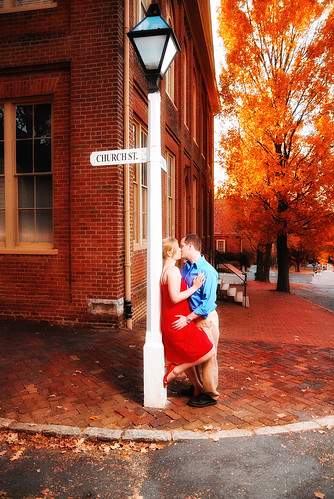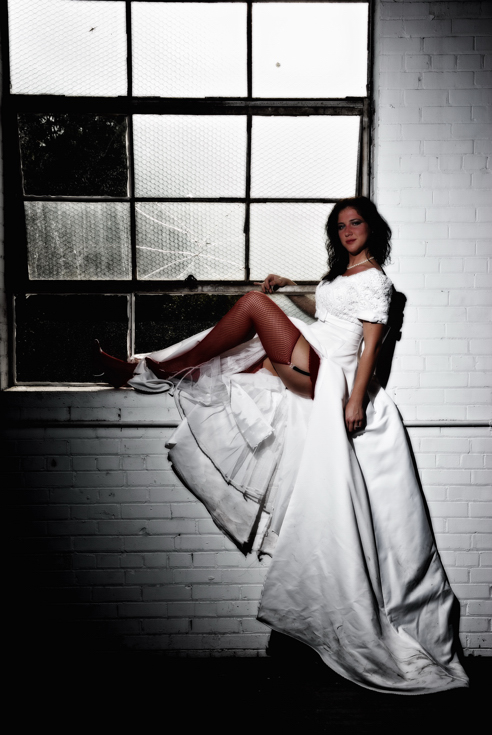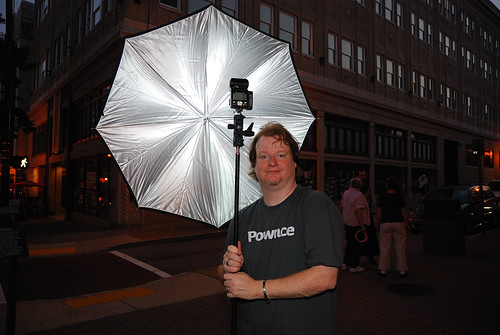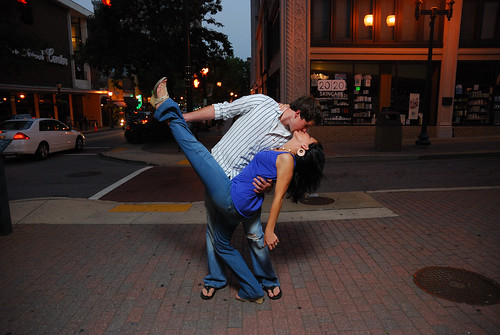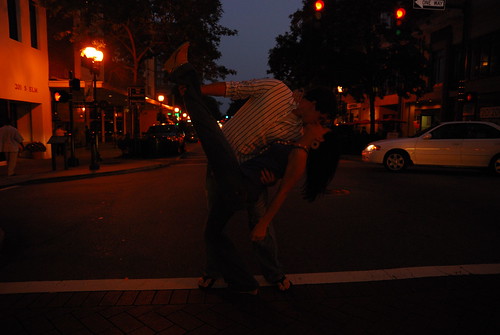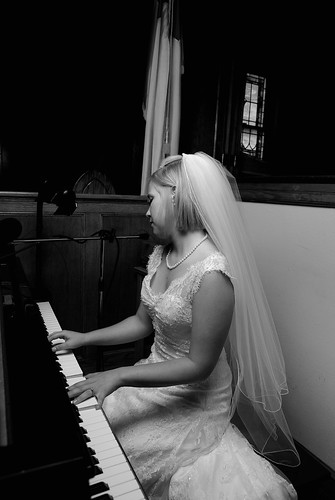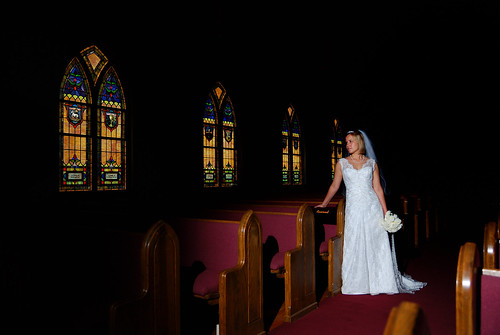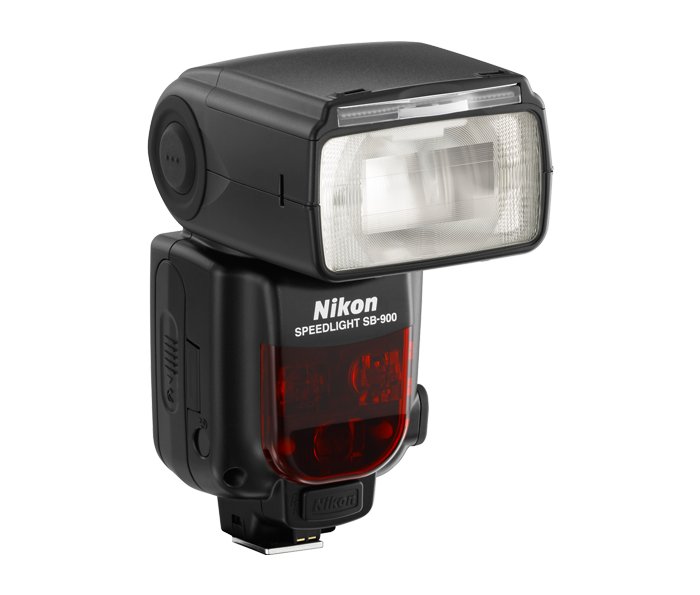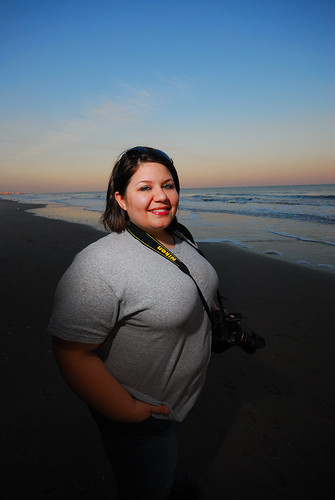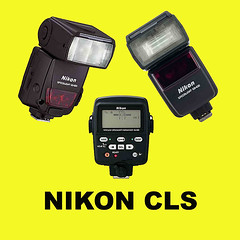After my last fiasco with TTL in the middle of the street I was pretty aggravated. But I decided to have another go of it last night while shooting a couple of bands for the
The Dotmatrix Project in downtown Greensboro. Let me set-up the set-up for you! I had a SB800 on camera as commander. Facing the stage I had a SB800 on the left of the stage gelled with a full CTO. On the right of the stage was a SB600 gelled with a Roscoe 2007 Blue. The SB800 was slightly high than the performers heads while the SB600 was considerably higher on top of a fully extended 8 foot light stand. All flashes were used on TTL, Sometimes I used the on board SB800 in TTL some times I did not.
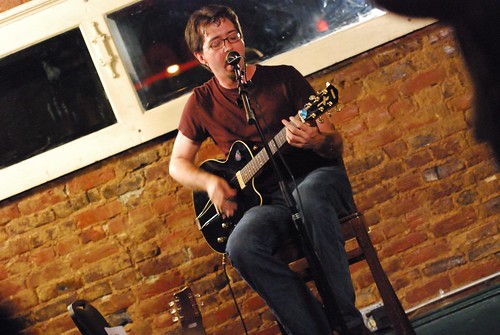
Let me start by showing an example of the ambient levels in the bar. This shot was at Hi 1.0 on my D80 (Approx. ISO 3200) at f/2.8, 1/80s. Pretty ugly since I was shooting with my 70-200 and 200mm at 1/80 is a little, uh...less than optimal. So we see what kind of night I would of have, and if I would have strapped on my Sigma 10-20 which is f/4 at 10mm I would have had to shoot at 1/40 and at 20mm f/5.6 at 1/20. Just not good, and I knew I wanted wide angle and tight shots all night.
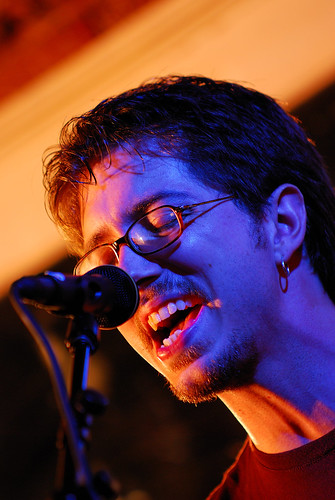
The first act up was
Tom Beardslee. This is the result of shooting at 1/250 to kill the ambient. I am shooting at f/3.2 (Yes I bumped the command dial I wanted f/2.8, LOL) in order to get the most from the flashes. TTL worked like a charm, the two remote strobes fired away with no correction required from me. The commanding SB800 was set to "--".
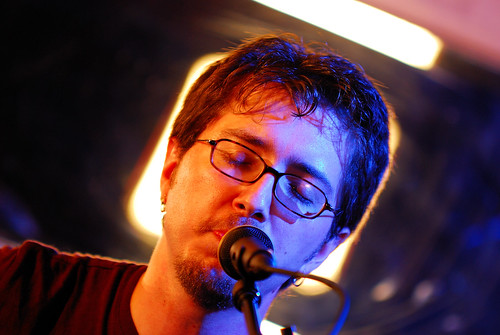
The little bit of light that was ambient was provided by the video guys who had two cool little soft boxes with hot light they clamped to the ceiling. I bobbed and weaved every where to avoid getting those things in the mirror behind the performers. Then I decided to use it! Same flash set-up, slowed the shutter speed down to 1/60 to get that ambient hot light where I wanted it, and ta-da instant back light.
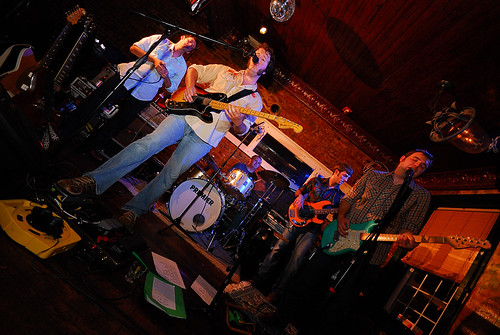
Up next
Possum Jenkins. This band was great, but more people makes it harder to adjust those lights so teh guy closer to one stand isn't blown out right. Well TTL handles this pretty well. If I had setup using Pocket Wizards I could not have changed the flash power on the units. I would have to shuffle the aperture up and down, which is fine just one more way of doing it. This shot I used the On board SB800 zoomed to 105mm on TTL. The goal was to really throw enough light to make sure the drummers face was lit. The harmonica player is a a little hot on the left, but its OK considering.

Exact same set-up here complete with zoomed on board. The only difference is I rotated around the stage and was directly under the SB800 on stage left, the one with the CTO gel, and I shot in tight.
This could have all been done with the strobes tripped with Pocket Wizards, and adjusting the aperture depending the spot I was shooting at. However CLS and TTL let me focus on my composition. Now this is not to say I didn't keep a check on things to make sure they didn't go wacky on me, because I did. BUt I was very impressed with CLS last night. Other then me positioning myself in spots where I knew the remote strobes wouldn't fire CLS was flawless.
Also, if you find your self shooting in a club, and you have enough strobes, skip the ambient, and light it yourself. And Don't be scared of mirrored walls! Use them, just make sure you keep yourself out of the image.
If you are interested the full set can be seen in my flickr stream now or by visiting
THIS SET IN MY STREAM.
